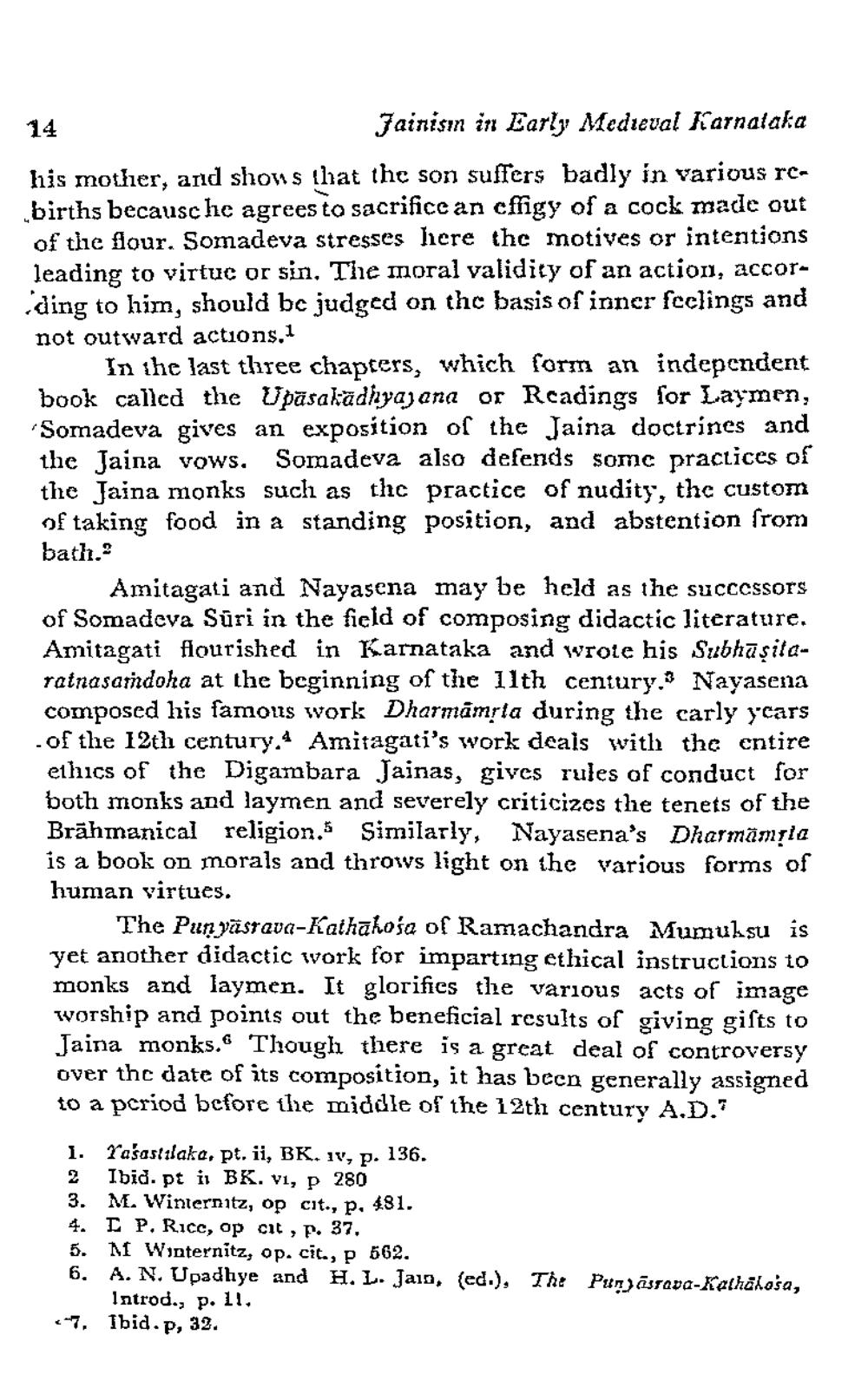________________
14
Jainism in Early Medieval fiarnalaka his mother, and shons that the son suffers badly in various rebirths becausche agrees to sacrificean cffigy of a cock made out of the flour. Somadeva stresses here the motives or intentions leading to virtuc or sin. The moral validity of an action, according to him, should be judged on the basis of inner feelings and not outward actions.1
In the last three chapters, which form an independent book called the Upasakādhyajana or Rcadings for Laymen, Somadeva gives an exposition of the Jaina doctrines and the Jaina vows. Somadeva also defends some practices of the Jaina monks such as the practice of nudity, the custom of taking food in a standing position, and abstention from bath.
Amitagati and Nayasena may be held as the successors of Somadeva Sūri in the field of composing didactic literature. Amitagati flourished in Karnataka and wrote his Subhaşilaratnasamdoha at the beginning of the Ilth century. Nayasena composed his famous work Dharmâmpla during the carly years of the 12th century.4 Amitagati's work deals with the cntire ethics of the Digambara Jainas, gives rules of conduct for both monks and laymen and severely criticizes the tenets of the Brāhinanical religion. Similarly, Nayasena's Dharmamia is a book on morals and throws light on the various forms of human virtues.
The Punyāstava-Kathakosa of Ramachandra Mumuksu is yet another didactic work for imparting ethical instructions to monks and laymen. It glorifics the various acts of image worship and points out the beneficial results of giving gifts to
Jaina monks. Though there is a great deal of controversy over the date of its composition, it has been generally assigned to a period before the middle of the 12th century A.D."
1. rasastilake, pt. ii, BK. 1V, p. 136. 2 Ibid. pt in BK. vi, p 280 3. M. Winternitz, op cit., p. 481. 4. IP. Ricc, op cit, p. 37. 5. M Winternitz, op. cit., p 562. 6. A. N. Upadhye and H. L. Jain, (ed.),
Introd., p. 11. <7. Ibid. p, 32.
The Punasrava-Kathalosa,




